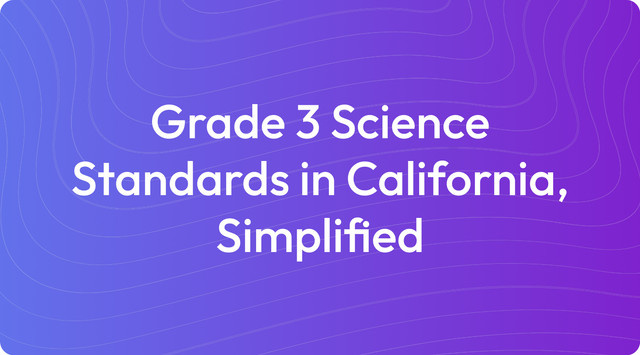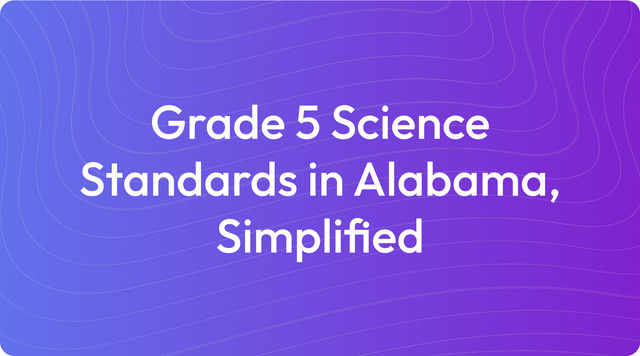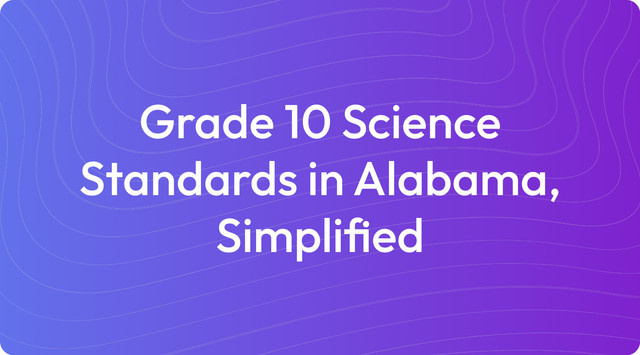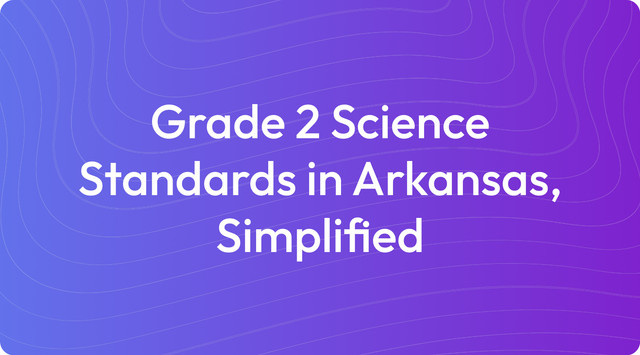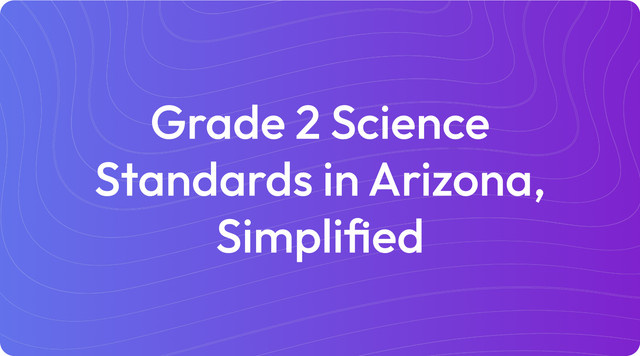Grade 9 Science Standards in Arkansas, Simplified
See how Grade 9 science in Arkansas delves into atoms, genetics, and ecosystems. For clear standards, read more on TeachShare!
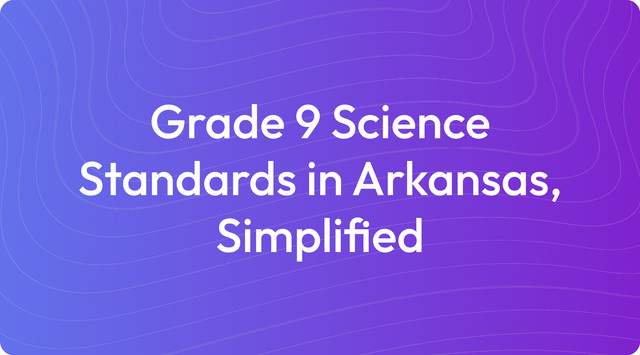
We understand that academic standards form the foundation of your curriculum. These guidelines define student learning objectives, and translating them into daily instruction is a significant part of your work. Our goal is to provide resources that make this process clearer and more manageable, supporting your expertise in the classroom.
Academic standards are learning goals that outline what students are expected to know and be able to do in each subject by the end of a grade level. For teachers, they provide a consistent framework for instruction without dictating specific teaching methods or materials. For example, Arkansas's Grade 9 Physical Science standards require students to learn about matter and its interactions, motion, and energy, giving educators clear targets for their lesson plans.
What Are Grade 9 Science Standards in Arkansas?
In Grade 9, Arkansas uses the K-12 Science Standards, which are aligned with the Next Generation Science Standards (NGSS). Most students take Physical Science, which integrates concepts from multiple scientific fields to provide a comprehensive foundation.
The Grade 9 standards for Physical Science are organized into the following domains:
- Physical Science (PS):
- HS-PS1: Matter and Its Interactions
- Atomic structure, periodic table, chemical bonding, chemical reactions, conservation of mass
- HS-PS2: Motion and Stability: Forces and Interactions
- Newton’s laws, gravitational and electromagnetic forces, relationships between force, mass, and acceleration
- HS-PS3: Energy
- Energy transfer, conservation of energy, kinetic/potential energy relationships, and energy in systems
- HS-PS4: Waves and Their Applications
- Wave properties, electromagnetic waves, and how waves transfer energy and information
- HS-PS1: Matter and Its Interactions
- Earth and Space Science (ESS):
- HS-ESS1: Earth’s Place in the Universe
- Solar system scale, formation of the universe, and star life cycles
- HS-ESS2: Earth’s Systems
- Plate tectonics, the rock cycle, and the water cycle
- HS-ESS1: Earth’s Place in the Universe
- Engineering Design (ETS):
- HS-ETS1: Engineering Design
- Define problems, design solutions, and evaluate designs based on constraints (cost, safety, impact)
- HS-ETS1: Engineering Design
The framework for these standards is guided by the Next Generation Science Standards and the Arkansas Division of Elementary and Secondary Education.
Key Tested Standards
For Grade 9 Science in Arkansas, assessments typically focus on foundational concepts in Physical Science, Life Science, and Earth and Space Science. These standards are designed to build critical skills for upper-level coursework, and the likely tested standards include:
Physical Science (PS)
- HS-PS1-1: Use models to explain the structure of atoms and how particles interact.
- HS-PS1-4: Conduct experiments to show how energy is absorbed or released during chemical reactions.
- HS-PS2-1: Analyze data to explain how forces influence the motion of objects and systems.
- HS-PS3-1: Develop models to demonstrate energy transfer and conservation.
Life Science (LS)
- HS-LS1-1: Explain how cellular systems work together to perform life processes.
- HS-LS2-1: Use models to describe how energy flows and matter cycles in ecosystems.
- HS-LS3-1: Explain how DNA and genetic variations influence inheritance.
- HS-LS4-4: Construct explanations for how natural selection results in species adaptations.
Earth and Space Science (ESS)
- HS-ESS1-3: Analyze and interpret data to determine the scale properties of objects in the solar system.
- HS-ESS2-1: Model how Earth's internal and surface processes interact (e.g., plate tectonics).
- HS-ESS3-1: Assess solutions for managing natural resources and minimizing environmental impacts.
These standards focus on modeling, analyzing data, conducting investigations, and solving real-world problems, all of which are critical for assessments. This information is based on guidance from the Next Generation Science Standards and the Arkansas Division of Elementary and Secondary Education.
Example Learning Objectives for Unit Planning
Learning objectives translate broad standards into clear, student-focused goals for each lesson. They define what students should be able to do by the end of a class, making progress measurable for both you and them. To illustrate, here are examples of learning objectives for two Grade 9 Science standards:
HS-PS1-4 (Energy in chemical reactions)
- I can conduct experiments to observe whether energy is absorbed (endothermic) or released (exothermic) during chemical reactions.
- I can use data from experiments to determine whether a reaction involves a change in energy.
- I can explain how energy changes in a chemical reaction are related to the breaking and forming of chemical bonds.
HS-LS2-1 (Energy flow and matter cycling in ecosystems)
- I can identify the roles of producers, consumers, and decomposers in the flow of energy in an ecosystem.
- I can use a model (e.g., food web or energy pyramid) to describe how energy flows and matter cycles through an ecosystem.
- I can explain how changes in one part of an ecosystem affect the energy and matter in other parts of the system.
Key Changes & Updates
The Grade 9 Science Standards were updated in 2015 to align with the Next Generation Science Standards (NGSS). This update introduced a more hands-on, inquiry-based approach to science education, focusing on three-dimensional learning. The goal is to help you engage students with real-world applications and phenomena, moving instruction from abstract concepts to practical problem-solving.
This framework integrates Science and Engineering Practices (what students do), Crosscutting Concepts (themes like cause and effect), and Disciplinary Core Ideas (content knowledge). As a result, performance expectations are more hands-on. Students are now asked to demonstrate understanding by conducting investigations, building models, and analyzing data. The standards also incorporate engineering design principles and place a greater emphasis on systems thinking to better prepare students for future challenges.
Create with TeachShare
We understand that translating these standards into effective classroom materials is a demanding task. Our platform is built to give you a head start, helping you generate differentiated, standards-aligned activities and lessons in minutes. This way, you can dedicate more of your valuable time to what you do best: teaching. Start creating standards-aligned instructional resources with TeachShare now.
Frequently Asked Questions
Why is Arkansas shifting to these new Grade 9 science standards?
The new standards are designed to move learning beyond memorizing facts. The focus is now on helping students develop critical thinking skills by applying science to real-world challenges. This approach, known as three-dimensional learning, integrates core science knowledge with hands-on practices to better prepare students for future learning and careers.
How does three-dimensional learning change my day-to-day teaching approach?
This model encourages you to act more as a facilitator for student-led discovery. Instead of relying mainly on lectures, your lessons will likely include more hands-on investigations, modeling activities, and data analysis. The goal is to help students see the connections between different science disciplines—like energy or systems—rather than teaching topics in isolation.
What kind of assessments align with this new hands-on approach?
Assessments are shifting to measure how students apply their knowledge. You'll see a greater emphasis on performance-based tasks. Here are a few examples:
- Creating models of atomic structures or Earth’s processes.
- Conducting experiments to observe and classify chemical reactions.
- Interpreting graphs showing population changes or an object's motion.
How do these standards prepare students for college and careers?
By focusing on foundational skills like modeling, data analysis, and problem-solving, these standards give students a strong base for advanced high school courses like biology and chemistry. More importantly, they introduce students to the type of thinking and investigation used in STEM fields, giving them valuable preparation for future career paths.
Are the science disciplines (like biology and chemistry) taught separately?
Not necessarily. A key part of the new standards is using "Crosscutting Concepts"—big ideas like cause and effect, patterns, or energy and matter—to connect the different disciplines. For example, you might teach a lesson that links chemical reactions (Physical Science) with how energy flows through an ecosystem (Life Science), showing students how these fields are interconnected.
Answer


